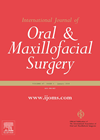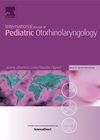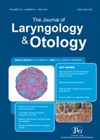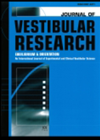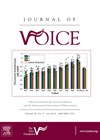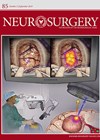
Journal Reviews archive for 2019
Locked or unlocked?
This systematic review and meta-analysis from the Netherlands evaluates postoperative complications of mandibular fractures using locking and non-locking systems. It is suggested that postoperative complications of surgical treatment of mandibular fractures occur in 20-26% of patients, and it is thought...
Do bicycle helmets prevent facial injuries?
This is an analysis from Germany where they reviewed over 7000 bicycle accidents over a 16-year period that met their inclusion criteria. Over 1000 had a facial injury (bone or soft tissue) with helmets being worn in 11.8% of accidents....
Identification of congenital hearing loss in Saudi Arabia
It has long been recognised that timely recognition of congenital hearing loss allows for the morbidity of hearing loss to be minimised. Due to the difficulties with identifying hearing loss in babies, combined with readily available screening technologies, many countries...
Swallow this: management of dysphagia in progressive neurological conditions
Whether the person with the swallowing difficulty has an acquired or progressive neurological condition, understanding the aetiology will allow the speech and language therapist assessing the swallow to have a better understanding of the likely implications for future swallow management...
Swallow this: management of dysphagia post-stroke
We know that between 50% and 80% of people who have had a stroke present with swallowing difficulties that may be associated with even a small lesion of the cortical or subcortical brain regions. This article provides an up-to-date overview...
Is dissection of level IV necessary in patients with negative neck oral cancer?
Supraomohyoid neck dissection (SOHND) refers to the removal of lymph nodes contained in levels I-III and is currently referred to as a selective neck dissection levels I-III. This type of neck dissection has been frequently used in the management of...
Algorithm for malignant otitis externa
Timely detection and effective management of this potentially fatal condition cannot be overemphasised. This study presents 16 cases over 12 months in a tertiary referral centre. Most patients had diabetes and others were immunocompromised due to radiotherapy, immunosuppressive medication or...
Diagnostic criteria for haemodynamic orthostatic dizziness
Over the past several years, the Bárány Society has been developing an International Classification of Vestibular Disorders (ICVD) in order to standardise diagnosis and nomenclature for both clinical and research purposes. Many in vestibular practice would be familiar with the...
MRI in diagnosis Meniere’s disease: what is the evidence?
The utility of magnetic resonance imaging (MRI) in the diagnosis of Meniere’s disease (MD) has attracted a lot of interest recently. It is well accepted that the saccule is the most common vestibular organ affected by endolymphatic hydrops (EH) and...
A novel scale for the assessment of tracheoesophageal voice quality – the SToPS
There is currently no assessment tool in widespread use that permits a valid and reliable perceptual assessment of voice quality following laryngectomy. Such a scale is needed to investigate the functional outcomes of surgical voice restoration and rehabilitation regimes. Existing...
Reliability of Koos classification
Vestibular schwannoma (VS) tumour size has been considered the primary determinant of hearing outcomes and facial nerve function according to several published studies. Varying methods are used to estimate the size and volume of the VS with very little consensus...
Follow-up of NF2 patients with ABRs, SDS and MRI
Hearing loss is one of the earliest manifestations in vestibular schwannomas with 60% of the patients having high frequency loss. Several metabolic and mechanical factors influencing the cochlea and cochlear nerve have been implicated in the hearing decline noted in...

